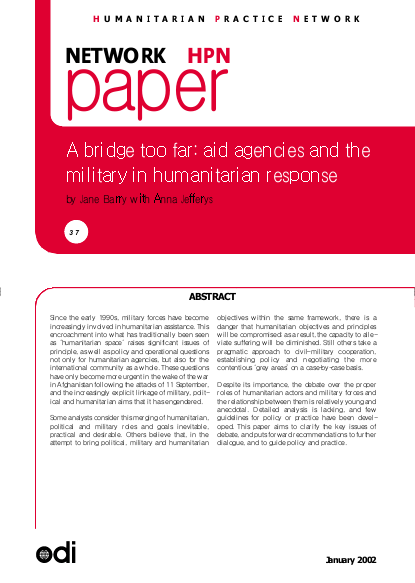Aid Agencies and the Military in Humanitarian Response

Since the early 1990s, military forces have become
increasingly involved in humanitarian assistance. This
encroachment into what has traditionally been seen
as ‘humanitarian space‘ raises significant issues of
principle, as well as policy and operational questions
not only for humanitarian agencies, but also for the
international community as a whole. These questions
have only become more urgent in the wake of the war
in Afghanistan following the attacks of 11 September,
and the increasingly explicit linkage of military, political
and humanitarian aims that it has engendered.
Some analysts consider this merging of humanitarian,
political and military roles and goals inevitable,
practical and desirable. Others believe that, in the
attempt to bring political, military and humanitarian
objectives within the same framework, there is a
danger that humanitarian objectives and principles
will be compromised; as a result, the capacity to alleviate
suffering will be diminished. Still others take a
pragmatic approach to civil–military cooperation,
establishing policy and negotiating the more
contentious ‘grey areas’ on a case-by-case basis.
Despite its importance, the debate over the proper
roles of humanitarian actors and military forces and
the relationship between them is relatively young and
anecdotal. Detailed analysis is lacking, and few
guidelines for policy or practice have been developed.
This paper aims to clarify the key issues of
debate, and puts forward recommendations to further
dialogue, and to guide policy and practice.